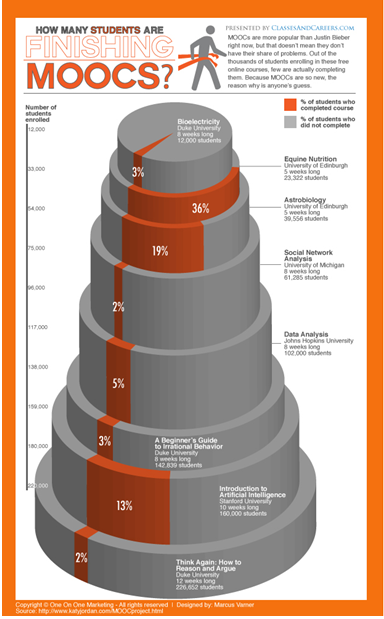Ever wondered on how you could improve your skill sets? Or what you could do in order to get an edge in the competition that we call life?
Be it Science, Engineering, Management or Humanities!
MOOCs are what you are looking for!
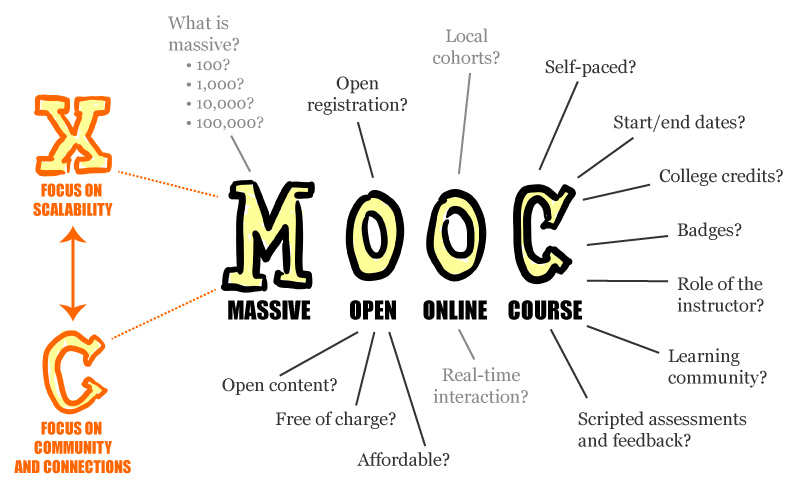

What is a MOOC?
MOOC or Massive Online Open Course, are online courses which are accessible to all, with the only prerequisite being the Internet. The term MOOC was first coined by Dave Cormier in the year 2008, during his time at the University of Prince Edward Island. The whole idea behind MOOCs was to provide a learning platform free of cost and ensuring that quality education is accessible to all. Though MOOCs are free to enroll, a verified certificate from the partner Institute can cost you a few bucks.
What is so massive about a MOOC?
A typical class would have anywhere between a hundred to tens of thousands of students. In the recent years, MOOCs have been popular with an estimate of 450+ universities offering a total of about 2500 courses across the world. It is an interesting fact to know that globally there are about 18 million students enrolled in various MOOCs.
A majority of those enrolled were found to be high school students who wanted to explore their career options, undergraduates who wished to learn more on an international platform and graduates who wanted to improve their skillset. However, MOOCs are not limited to students, with a fair number of those who are employed actively taking up courses that they found interesting.
What is the difference between a MOOC and an online video lecture series?
A MOOC involves a lot more participation from the instructor as well as the students, it includes multiple assignments, projects, discussions and many such activities in order to give the user a classroom-experience. For example, MIT has partnered up with Edx (MITx) since 2011, offering courses which involve video lectures, regular assignments, access to a discussion forum and on successful completion of the course you could opt for a verified certificate. MIT Opencourseware(OCW) on the other hand is a lecture series started in 2002 covering various topics, while it does include assignments and quizzes, there isn’t any actual verification or certification involved.
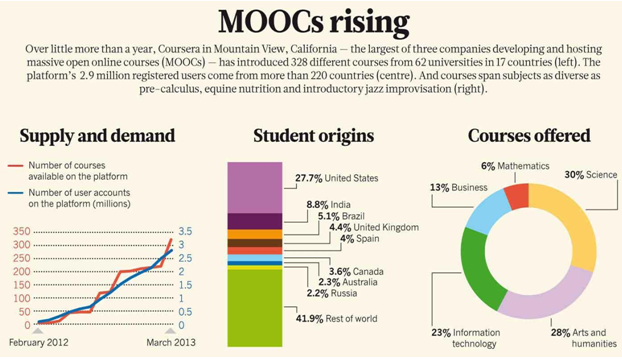

Popularity of MOOCs in India
In India the popularity of MOOCs seem to have skyrocketed due to the awareness brought about by various initiatives. Though the term “MOOC” by itself is not very popular NPTEL, Edx, Udacity and Coursera seem to have found their way to our vocabulary. In terms of Indian Institutes, IIM Bangalore(IIMBx) has about 6 courses up on Edx ranging from Statistics for Business to Introduction to Operations Management. IIT Delhi offers a very interesting course on Web Intelligence and Big Data on Coursera, which seems to be a hot course with programming enthusiasts. IIT Bombay(IITBombayX) is offering 4 courses on Edx, with Signals and Systems, and Thermodynamics being popular among undergraduates.
NPTEL: The Indian MOOC Provider
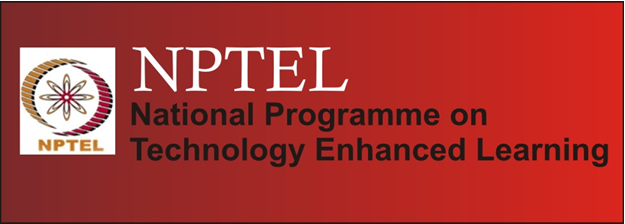

The National Programme on Technology Enhanced Learning(NPTEL) is the MOOC provider promoted and funded by the Ministry of Human Resource Development (MHRD), with 7 IITs and IISc as its partner institutes. It currently has 25 ongoing courses with about 52 completed courses and a total of only 7267 students certified as of August 2015. Initially NPTEL, started off as an online video lecture series similar to MIT OCW, but later on ventured into a MOOC provider. Also, It is interesting to know that the NPTEL channel has about 149 million views and 400,000 subscribers.
What makes NPTEL unique?
NPTEL in collaboration with Tata Consultancy Services (TCS), conducts proctored exams held in more than 50 cities across India, whereas other MOOC providers conducts online exams without any such supervision. This provides the students a classroom like experience and also greatly reduces any malpractice involved in the certification exam.
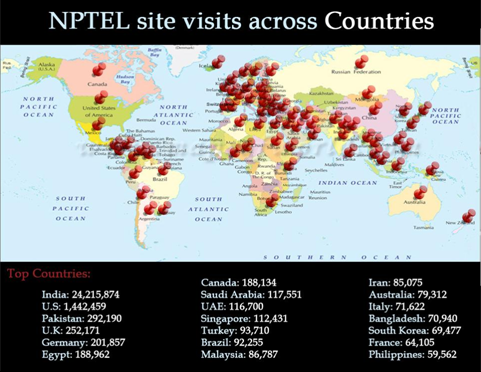

MOOCs-A disruptive innovation in the field of education?
A large number of topics can be effectively delivered by means of MOOCs. A course with thousands of active students would result in larger participation, whereby students could discuss and help each other, understand and grasp the concepts a lot better.This would enable students to experience a completely different approach to education.
MOOCs enable certain specific topics targeted at particular groups to be taught efficiently, though this would result in a smaller course strength. An example would be the AgMOOCs or MOOCs for Agriculture run by Prof. T. V. Prabhakar, department of Computer Science & Engineering at IIT-Kanpur. The course was primarily targeted for postgraduates, PhDs and working professionals, who otherwise would not be able to do such a course due to lower popularity.
They also serve as an efficient revision process for those who are already familiar with the subject, for example, a large number of GATE(Graduate Aptitude Test in Engineering) aspirants referred to NPTEL videos during their preparation and found them quite helpful!
What are the major hurdles faced by MOOCs in India?
The two main hurdles faced by MOOCs are low broadband penetration and loss of interest in the course being taught.
With the advent of MOOCs in a country like India, colleges across the country would be forced to invest in their broadband infrastructure. This would ensure greater broadband penetration. As of now, many colleges download the lecture videos and students watch it on LAN. This leads to lower participation and is not sustainable on the long run. Also, colleges should realise YouTube as a tool for education and make sure it is accessible rather than ban it.
The completion rates for MOOCs across the world is under 10 percent. It is quite challenging to pitch courses to a large number of participants. For example, the C programming course, conducted by Prof. Satyadev Nandakumar, had upwards of 30,000 registrations each time it was run, with about 1500 students taking the final exam. Prof. Nandakumar has been trying to figure out ways to improve the percentage of successful completion, he hopes to accomplish this by reviewing the feedback given, especially from those who had completed more than 20% of the course but dropped it later on.
MOOCs and the Indian market
Given the competitive and education-oriented behaviour of Indians, a course or a certificate offered by an IIT, or any institute of such repute, would always be of great demand among the general population in India. The number of students enrolled for various MOOCs in India is predicted to grow exponentially with the increase in broadband penetration in the coming years. Also, there seems to be a large and untapped market for MOOC providers to venture into delivering MOOCs in regional languages. This provides a huge opportunity for the growth of education based startups.
So now that we have a rough idea on what a MOOC is, I guess it is about time we start MOOCing. With tons of free courses to explore, we should try to make the best of it!
I would like to thank Prof. Satyadev Nandakumar, assistant professor in the department of Computer Science and Engineering at IIT- Kanpur, who has been instrumental in helping me write this article. He has been an instructor of a C programming course offered by NPTEL last year and is planning on teaching the same course with Prof. Amey Karkare the coming year.
By Tony K. John

